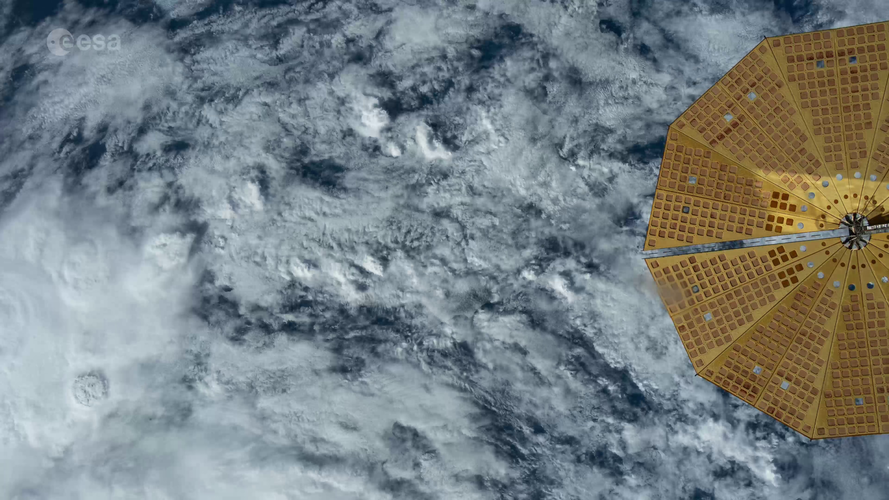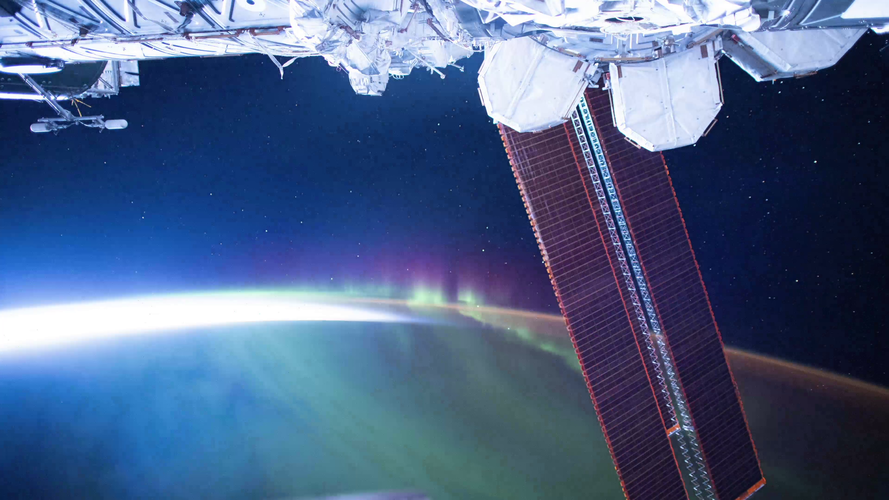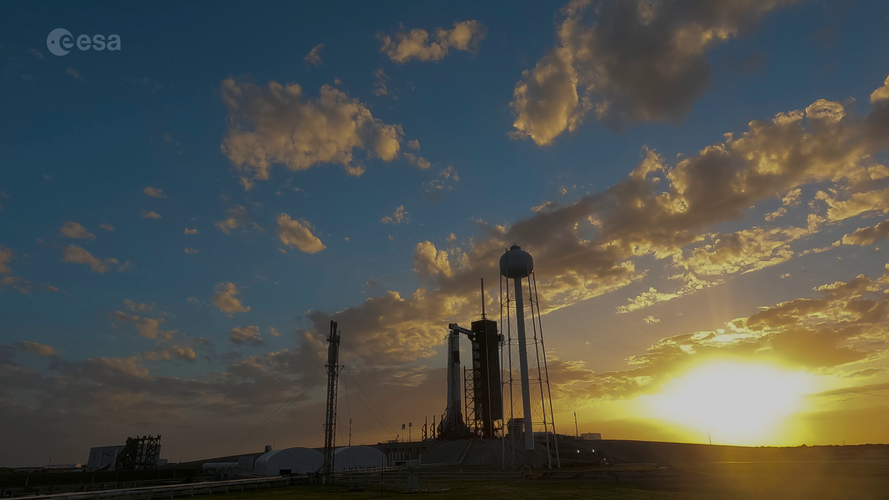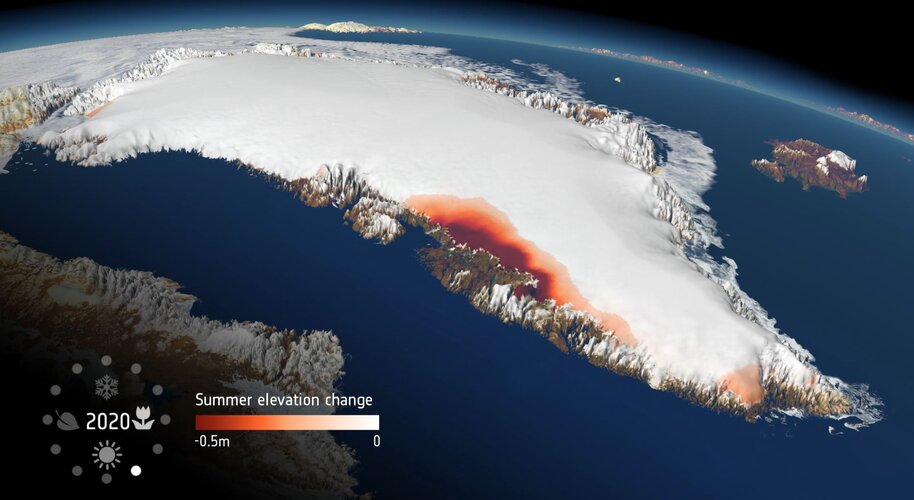
Copernical Team
A mission to explore the methane lakes on Titan

Neither mission will be the first time Titan's surface has been visited, though. That distinction belongs to Huygens—a lander launched with the Cassini probe. Unfortunately, with the relatively limited technology of a probe launched in the late 1990s, it was only able to send data back from the surface for about an hour and a half.
Looking down during a day on Earth timelapse
 Video:
00:02:24
Video:
00:02:24
This timelapse video was made during ESA astronaut Thomas Pesquet’s second mission to the International Space Station, “Alpha”. The camera is setup to take pictures at intervals of two a second, and the pictures are then edited into this video that plays at 25 pictures a second. The video is around 12 times faster than real speed and was recorded on 20 September 2021.
Thomas shared this video on social media with the caption:
“Another timelapse looking straight down at Earth, but this time during the day, with Cygnus' solar array looking too. Each orbit over our planet passes
Best of Alpha mission timelapse
 Video:
00:04:35
Video:
00:04:35
A collection of the best timelapse videos made during ESA astronaut Thomas Pesquet’s second mission to the International Space Station, “Alpha” in 2021. The camera is setup to take pictures at intervals of two a second, and the pictures are then edited into this video that plays at 25 pictures a second. Most videos around 12 times faster than real speed.
Thomas shared this video on social media with the caption:
“Probably the last the timelapse from space, and fittingly here is a special edition "best of" montage: aurora, lightning, spacewalks, day views and spacecraft reentry in less than
A Dragon awaits
 Video:
00:02:58
Video:
00:02:58
A timelapse of Launchpad 39A at NASA's Kennedy Space Center in Florida, USA, where the SpaceX Crew Dragon capsule Endurance sits atop a Falcon 9 rocket, ready to carry Crew-3 to the International Space Station.
Initially scheduled for launch on 31 October 2021, this Dragon will wait a bit longer due to weather along the flight path and a minor medical issue affecting a member of its crew. The next launch attempt is now no earlier than 03:36 GMT/04:36 CET, Sunday, 7 November.
When it does fly, it will transport ESA astronaut Matthias Maurer, as a member of Crew-3
Meltwater runoff from Greenland becoming more erratic

As world leaders and decision-makers join forces at COP26 to accelerate action towards the goals of the Paris Agreement, new research, again, highlights the value of satellite data in understanding and monitoring climate change. This particular new research, which is based on measurements from ESA’s CryoSat mission, shows that extreme ice melting events in Greenland have become more frequent and more intense over the past 40 years, raising sea levels and the risk of flooding worldwide.
ESA and GHGSat support new International Methane Emissions Observatory

In the first 20 years of reaching the atmosphere, methane has more than 80 times the warming power of carbon dioxide. Reducing emissions of this extremely potent gas is, therefore, one of the fastest ways of slowing the rate of global warming, at least in the short term – and at COP26, more than 100 countries have just signed up to the Global Methane Pledge, which aims to limit emissions by 30% compared with 2020 levels.
With both public and commercial satellite data playing key roles in assessing progress on climate action, ESA and GHGSat are supporting the United Nations Environment
Simulations in 3D improve understanding of energetic-particle radiation and help protect space assets
 A team of researchers used 3D particle simulations to model the acceleration of ions and electrons in a physical process called magnetic reconnection. The results could contribute to the understanding and forecasting of energetic particles released during magnetic reconnection, which could help protect space assets and advance space exploration.
"For the first time ever, we can use 3D simu
A team of researchers used 3D particle simulations to model the acceleration of ions and electrons in a physical process called magnetic reconnection. The results could contribute to the understanding and forecasting of energetic particles released during magnetic reconnection, which could help protect space assets and advance space exploration.
"For the first time ever, we can use 3D simu Gravitational 'kick' may explain the strange shape at the center of Andromeda
 When two galaxies collide, the supermassive black holes at their cores release a devastating gravitational "kick," similar to the recoil from a shotgun. New research led by CU Boulder suggests that this kick may be so powerful it can knock millions of stars into wonky orbits.
The research, published Oct. 29 in The Astrophysical Journal Letters, helps solve a decades-old mystery surrounding
When two galaxies collide, the supermassive black holes at their cores release a devastating gravitational "kick," similar to the recoil from a shotgun. New research led by CU Boulder suggests that this kick may be so powerful it can knock millions of stars into wonky orbits.
The research, published Oct. 29 in The Astrophysical Journal Letters, helps solve a decades-old mystery surrounding The Road to Launch and Beyond for NASA's James Webb Space Telescope
 Now that NASA's James Webb Space Telescope has safely arrived at its launch site in French Guiana, on the northeastern coast of South America, technical teams have begun making progress on the final checklist of preparations before liftoff later this year.
These preparations are expected to last 55 days from the observatory's arrival by ship to the day of launch.
After Webb arrived a
Now that NASA's James Webb Space Telescope has safely arrived at its launch site in French Guiana, on the northeastern coast of South America, technical teams have begun making progress on the final checklist of preparations before liftoff later this year.
These preparations are expected to last 55 days from the observatory's arrival by ship to the day of launch.
After Webb arrived a Rocky Exoplanets Are Even Stranger Than We Thought
 Astronomers have discovered thousands of planets orbiting stars in our galaxy - known as exoplanets. However, it's difficult to know what exactly these planets are made of, or whether any resemble Earth. To try to find out, astronomer Siyi Xu of NSF's NOIRLab partnered with geologist Keith Putirka of California State University, Fresno, to study the atmospheres of what are known as polluted whit
Astronomers have discovered thousands of planets orbiting stars in our galaxy - known as exoplanets. However, it's difficult to know what exactly these planets are made of, or whether any resemble Earth. To try to find out, astronomer Siyi Xu of NSF's NOIRLab partnered with geologist Keith Putirka of California State University, Fresno, to study the atmospheres of what are known as polluted whit 